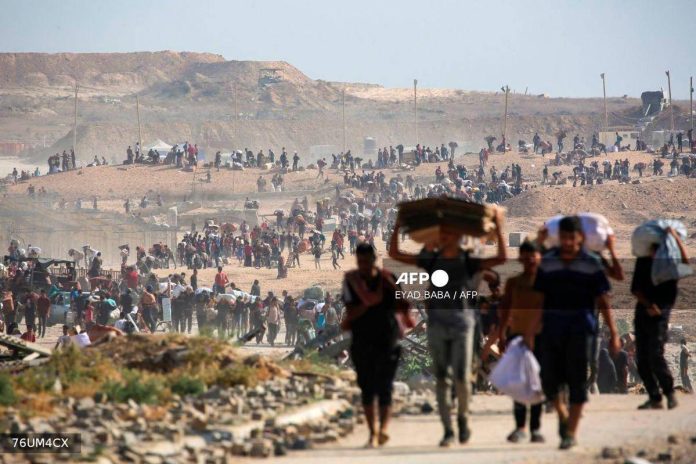PARIS: International medical professionals have described witnessing the most severe injuries they have ever encountered while treating patients in Gaza.
A new peer-reviewed study published in the BMJ journal on Friday details the accounts of 78 humanitarian healthcare workers, primarily from Europe and North America.
These workers responded to survey questions about the nature and causes of wounds observed during their deployments in the Gaza Strip between August 2024 and February 2025.
The British-led research team stated this is the most comprehensive data available on Palestinian injuries from Israel’s prolonged offensive, given the devastation of Gaza’s health infrastructure.
Study lead author British surgeon Omar El-Taji told AFP that two-thirds of the healthcare workers had experience in other conflict zones, with the vast majority calling the Gaza injuries the worst they had ever seen.
Doctors and nurses catalogued more than 23,700 trauma injuries and nearly 7,000 weapon-related wounds, with data broadly consistent with World Health Organization figures.
The study characterised the wounds in Gaza as unusually severe, with over two-thirds of weapon injuries caused by explosions.
This explosive injury rate is more than double that recorded among civilians in other modern conflicts and resembles rates suffered by US soldiers in Iraq and Afghanistan.
El-Taji emphasised this is a significant difference because soldiers receive training and protection unlike civilians.
Patients also presented with an unusually high proportion of severe third and fourth-degree burns that exposed muscle and bone.
El-Taji recalled seeing children with burns so severe that their muscle and bone were visible.
Malnutrition and dehydration were the most commonly reported illnesses in the territory, where a UN-backed assessment declared famine in August.
Imperial College London professor Anthony Bull, who was not involved in the research, called it very important work while noting the data only includes survivors who reached healthcare workers.
The survey included a section for healthcare workers to provide free-text descriptions of their experiences.
One physician described the worst part as mothers begging them to save their already-dead children.
Others reported children expressing suicidal intent after witnessing family members die.
Many described operating with almost no supplies, leading to difficult decisions about rationing care to patients most likely to survive.
El-Taji arrived at Gaza European Hospital just before Israel’s major invasion of Rafah, treating groups of up to 70 seriously wounded people nightly.
He recounted one night when doctors and nurses donated their own blood to compensate for critically low supplies.
The conflict began with Hamas’s October 7, 2023 attack on Israel that killed 1,219 people, mostly civilians.
Israel’s retaliatory campaign has killed more than 65,500 people in Gaza, mostly civilians, according to Hamas-run health ministry figures deemed reliable by the UN.
The Gaza health ministry reports more than 167,000 people have been injured.
El-Taji lamented that international healthcare workers are increasingly being barred from entering Gaza.
The WHO’s representative for the Palestinian territories stated in August that this arbitrary denial leads to more preventable deaths. – AFP








